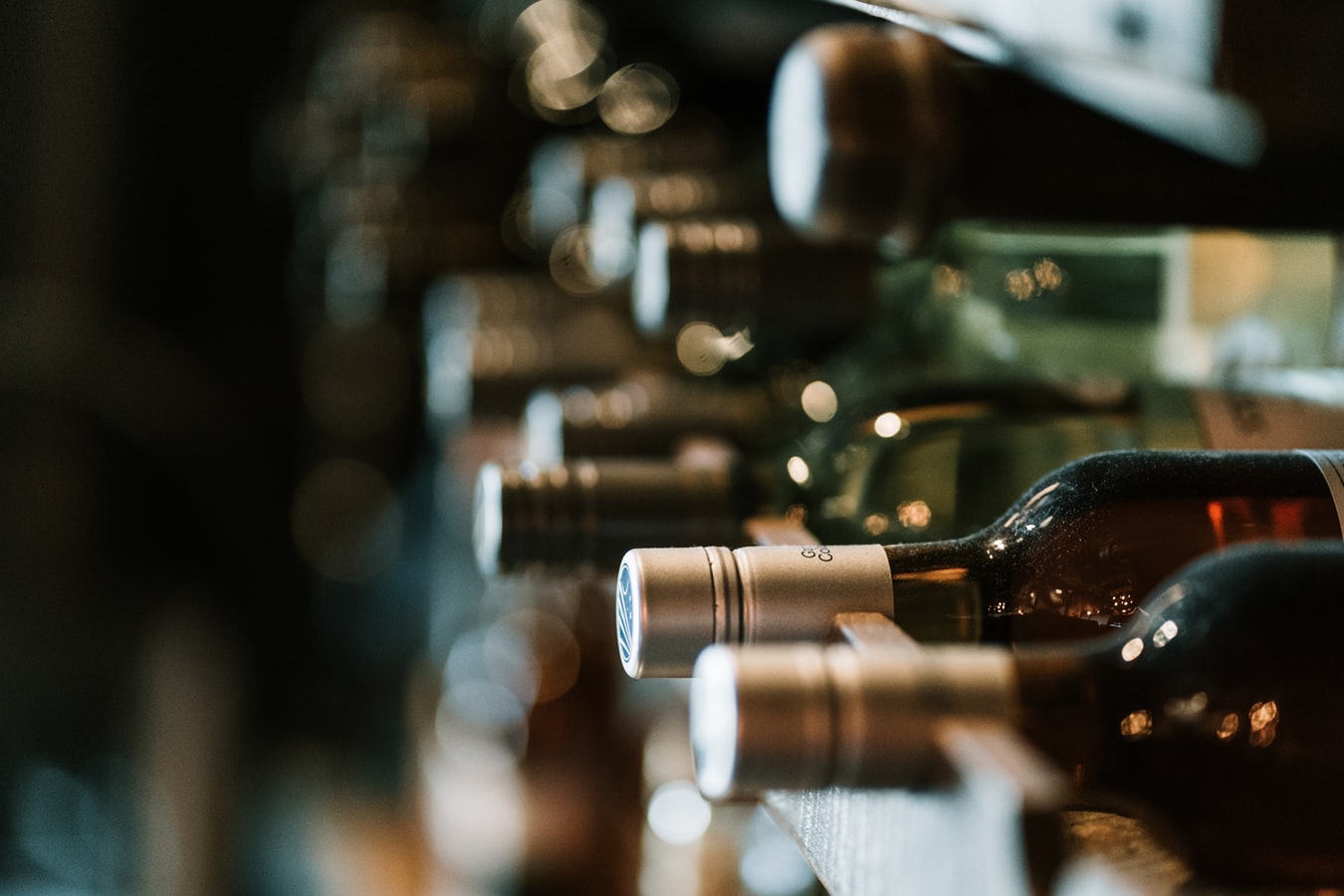
Whether you're a seasoned oenophile with a well curated wine collection suitable for aging or a wine enthusiast who likes to keep a few bottles on hand of whatever was on sale, storing and serving you wine at the right temperature is key to an optimal wine drinking experience.
What Is Long-Term Wine Storage?
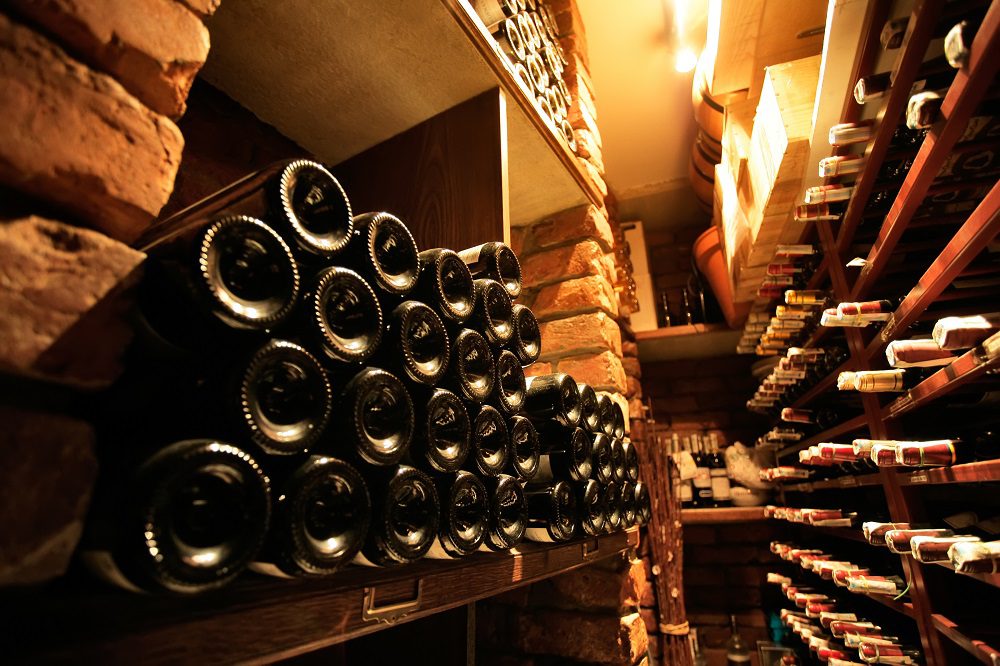
Only a small fraction of wine produced worldwide is intended to be aged; most bottles sold in the United States and elsewhere should be consumed well within a year of purchase.
Wines that are appropriate for aging require proper long-term storage. Under the right environmental conditions, the wines that fall into this category evolve and improve for years or even decades after they are bottled.
Long-Term Storage Conditions
For wines you intend to hold to for years, or even decades, you need an environment that is:
- Dark. Exposure to ultraviolet rays is harmful to the delicate flavors and aromatics in wine.
- Cool and temperature stable. 53 to 57 degree is ideal, and the temperature shouldn’t fluctuate. Warmer temperatures age wines too quickly. Cooler temperatures stunt the development and evolution of volatile flavor compounds.
- Fairly humid. Humidity levels of 70% help keep corks moist. Dry corks permit air into the bottle, which causes unpleasant oxidation.
- Still. Vibrations can agitate sediment in wines. That same agitation could also conceivably speed up the chemical reactions occurring on the molecular level in the bottle.
- Accommodating to the storage of bottles on their sides. This will keep the cork moist. (Note that if a bottle has a screw top, it wasn’t meant to be aged in the first place.)
Some people are fortunate enough to have basements that check all the above boxes. Otherwise, wine collectors outfit a room in their home with environmental controls or purchase a cabinet equipped with temperature and humidity settings, and vibration and UV protections. Both options are significant purchases that not all wine collections warrant. But if you spending thousands of dollars per year on wine, it is probably worth protecting your investment with a professional grade aging system.
What Is Short-Term Wine Storage?
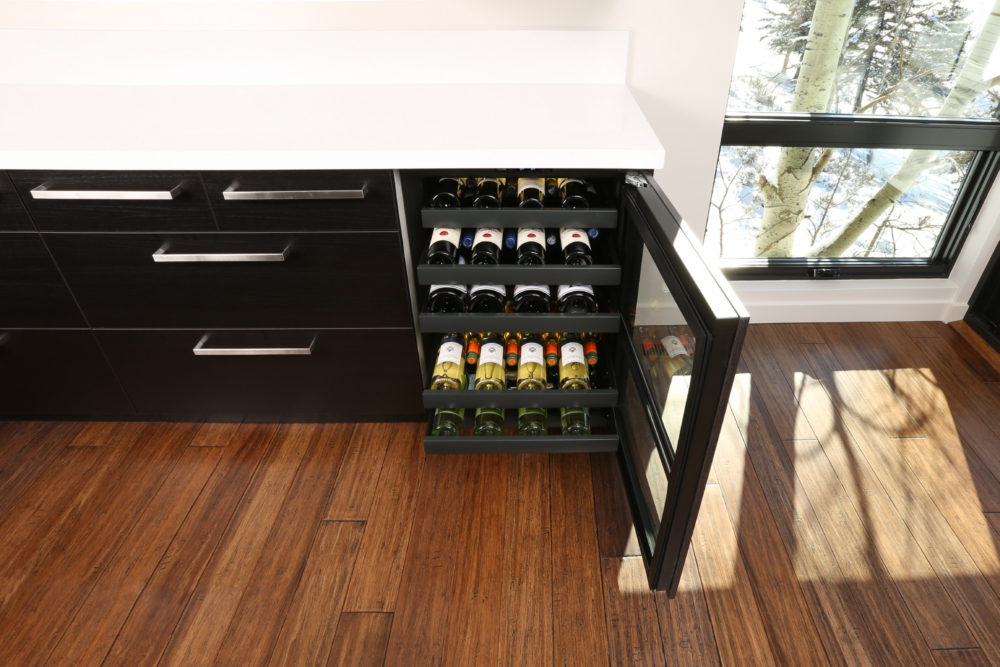
Most people’s wine collections are better suited for short-term storage. That’s because the vast majority of wine produced and purchased is intended for immediate consumption. The wines most of us regularly drink do not age gracefully, which means you should open them relatively soon after you bring them home. (Though in some cases, and under the right environmental conditions, you might be able to hold on to an inexpensive bottle for a couple of years without issue.)
Short-Term Storage Conditions
If you have a professional-grade wine cellar, by all means store your everyday wine there. Otherwise, inexpensive wines do just fine if they are kept consistently cool (but not too cold) and out of the way of light. As with long-term storage, a temperature of 53 to 57 degrees is best. That goes for red and white.
Because it is typically set at around 40 degrees, your kitchen fridge is too cold for proper short-term wine storage (and too dry at that). For short-term storage, a dedicated wine refrigerator /wine chiller is ideal. Wine refrigerators can be set to an optimal storage temperature and are designed to retain humidity rather than drive it out. They also come in a variety of sizes to fit a multitude of spaces and collections.
Ideal Wine Serving Temperature
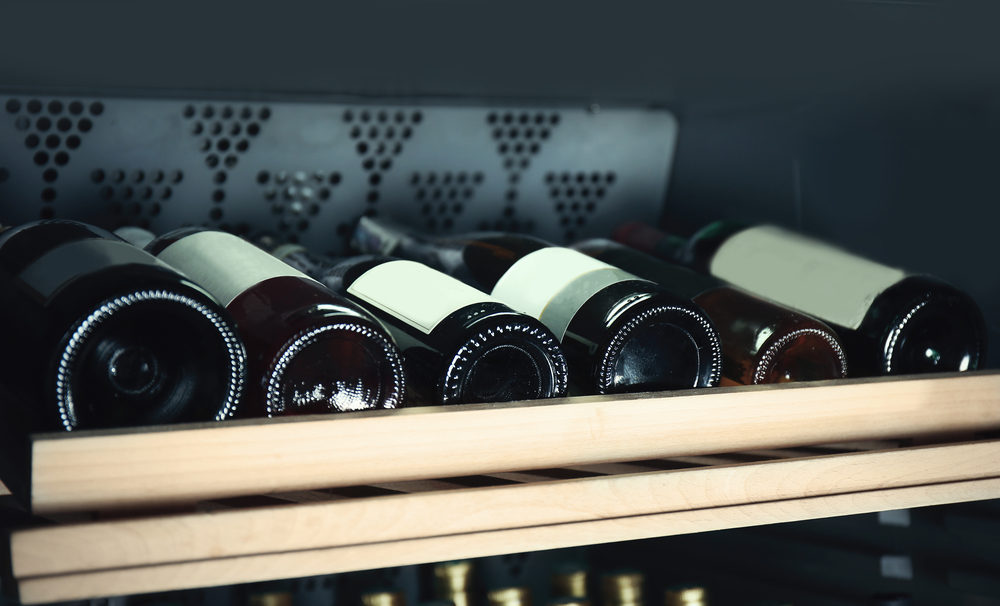
You can also use wine refrigerators / wine coolers to hold bottles at proper serving temperature. Proper serving temperature is not the same as proper storage temperature, and it varies between wine styles and from varietal to varietal.
Red Wine Serving Temperature
It is a misconception that a red wine should be served at room temperature, which would put it somewhere near 70 degrees. At that high of a temperature, the alcohol begins to evaporate, throwing things off balance.
On the contrary, reds are at their best when served slightly chilled, between 58 and 65 degrees, depending on the exact style and/or varietal. In general, complex, mature wines should be served on the warmer end of that spectrum (61 to 65 degrees), which allows drinker to appreciate the full potential of their bouquet. Tannic reds should also be served in the 61 to 65 degree range, since cooler temperatures tend to exaggerate their astringency. Lighter reds, especially those with decent acidity, should be served colder. 55 degrees is appropriate.
For a drilled down look at recommended serving temperatures for different varieties and styles of red wine, refer to the chart below.
White Wine Serving Temperature
White wines should be served colder than reds but not so cold as to mute whites’ already more delicate aromatics. That means you should chill your bottle to somewhere between 45 and 55 degrees, depending on the grape and style. As a general rule, complex, medium- and full-bodied whites should be served on the warmer end of that range, and lighter whites should be served colder to maximize their refreshing qualities. Sparkling whites are served very cold to maintain their crisp carbonation. Sweet white wines are also generally best quite chilled, since warm temperatures can make them seem cloying.
The chart below details specific proper serving temperature for different kinds of white wine.
Wine Serving Temperatures by Varietal / Style
Certain grapes and styles of wine call for more specific serving temperature recommendations. Of course, these suggestions are generalities. Feel free to experiment with serving temperature to find out how your favorite wine changes as it warms or cools. Remember that the best serving temperature is the temperature at which wine tastes best to you.
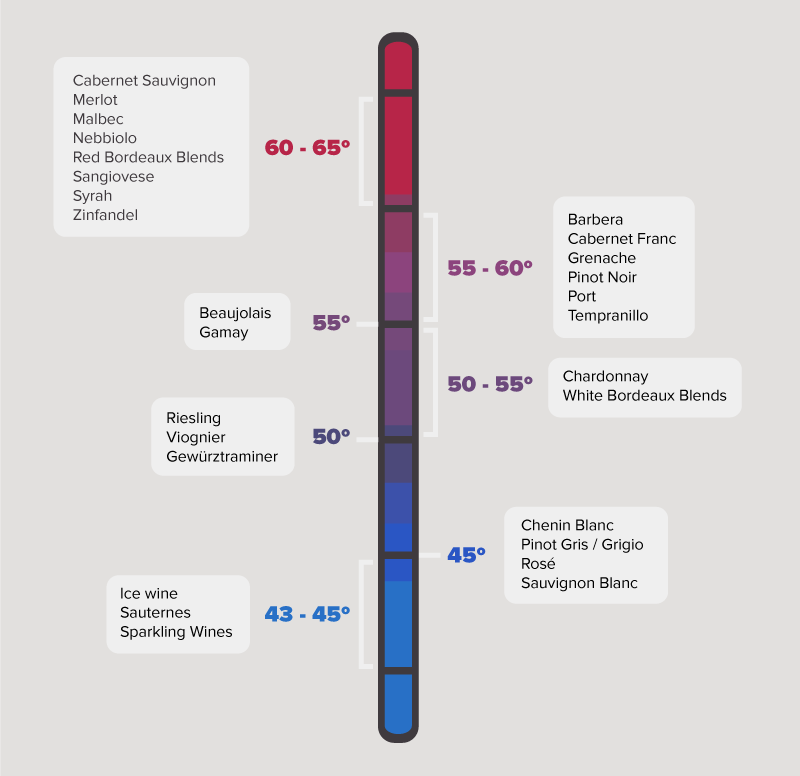
Related:
| Grape / Style |
Serving Temperature |
| Ice wine |
43-45 |
| Sauternes |
43-45 |
| Sparkling Wines |
43-45 |
| Chenin Blanc |
45 |
| Pinot Gris / Grigio |
45 |
| Rosé |
45 |
| Sauvignon Blanc |
45 |
| Riesling |
50 |
| Viognier |
50 |
| Gewürztraminer |
50 |
| Chardonnay |
50-55 |
| White Bordeaux Blends |
50-55 |
| Beaujolais |
55 |
| Gamay |
55 |
| Barbera |
55-60 |
| Cabernet Franc |
55-60 |
| Grenache |
55-60 |
| Pinot Noir |
55-60 |
| Port |
55-60 |
| Tempranillo |
55-60 |
| Cabernet Sauvignon |
60-65 |
| Merlot |
60-65 |
| Malbec |
60-65 |
| Nebbiolo |
60-65 |
| Red Bordeaux Blends |
60-65 |
| Sangiovese |
60-65 |
| Syrah |
60-65 |
| Zinfandel |
60-65 |



Leave a Comment